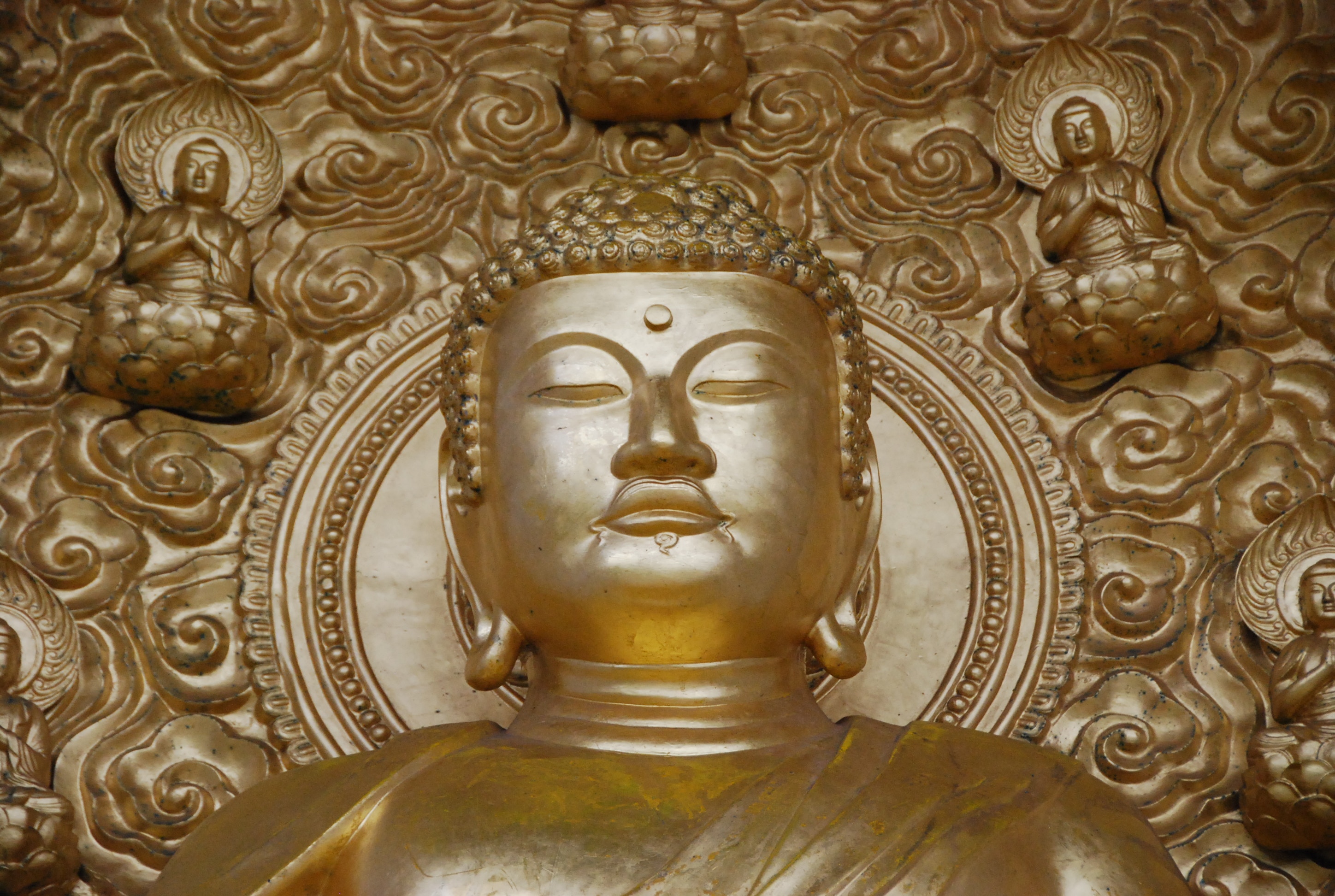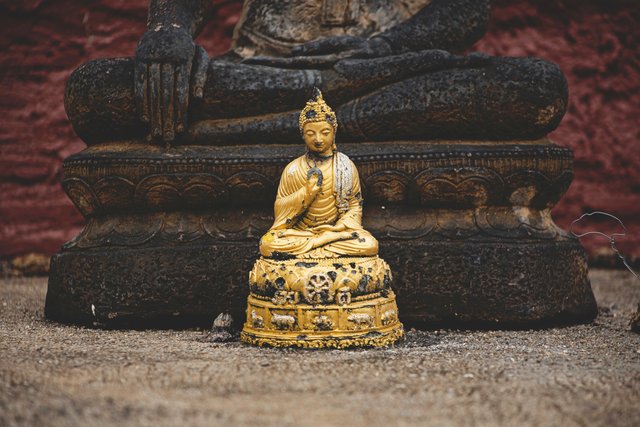💝 Making Mindfulness Meditation Work For You Part 3 – The Noble Eightfold Path – Right Thought 💝

So, as we are seeing here in this third installment the path of Buddhist philosophy and practice are three categories of training and discipline which are a) Ethical Conduct b) Mental Discipline c) Wisdom. Here is this essay we look closely at the second part of the Wisdom element Right Thought. Again, these are not intended to be practiced in any order but simultaneously…so let’s begin.
What is Right Thought?
In the simplest interpretation Right Thought would be described as cultivating pure thoughts and rejecting any impure thoughts and thought-forms such as violent pictures. That is cultivating thoughts of selfless renunciation or detachment, thoughts of non-violence and thoughts of love extended to all beings. This is not easy when most if not all of us have someone we can think of that we would like to see hanged. But it will be illustrated, if you stick with this essay to the end and watch the video, why and how to do this and when you get it it’s going to change your life. This is on every level, personal, political and social.
“Your worst enemy cannot harm you as much as your own thoughts, unguarded. But once mastered, no one can help you as much, not even your father or your mother.” -The Buddha
We often look to others for guidance when a lot of the time the reason we can figure things out is because the nature of the untrained mind that is full of scattered, wandering random thoughts. This is the untrained mind! No wonder you get confused! Everyone has it. Thoughts are very useful when we are focused on something we want to accomplish and we have the map of how and where we want to go so we use our thoughts in a direct and controlled way and voila! We make it happen. But when we are not focused and clear the random nature of the mind will arise and cause confusion. Simple don’t you think? Simple but not so easy! So, Buddhist practice to the rescue and don’t you feel some gratitude about that right in this moment?

Photo by Christian Sterk on Unsplash
Trauma
Buddhism has many types of meditation that will assist you in letting go of the negative such as the onslaught of negative thoughts we have due to the negativity bias and things that happen in our lives even traumatic things. It is important to note especially with trauma that we are not talking about suppressing emotional pain and thoughts that come from deep wounding. We need to feel them thoroughly to release them and we can often do this in the hands of a skilled therapist. But even with and dare I say especially with the thoughts associated with traumatic wounding it is not helpful nor skillful to ruminate about such things.. This is the key. Feel through to release and heal within a specific time and framework such as in your therapist office then the rest of the hours and minutes of your life practice Right View so as not to re-contaminate your mind. Got it?
To recap this very important and life changing information about dealing with trauma on the Buddhist path:
- bring up painful thoughts and emotions in a safe space
- feel them thoroughly for healing and release
- avoid thoughts and actively work to replace them to avoid recontamination
This one key to working with negative thoughts especially due to trauma and violence could transform our entire planet into one of forgiveness and love.

Photo by jesse orrico on Unsplash
What Science Has to Say About Entertaining Thoughts – Confirmation Bias
We discussed the Negativity Bias in the previous posts and here we will introduce the concept discovered by cognitive scientists that shows us how the mind steers us in the wrong direction if we focus on negative thoughts: Confirmation Bias.
con•fir•ma•tion bi•as
noun
noun: confirmation bias
- the tendency to interpret new evidence as confirmation of one's existing beliefs or theories.
Not understanding the way our minds can play tricks on us we most often take our thoughts as evidence which then leads to us focusing on them more. When we continue to focus on certain thought patterns over a period of time they become beliefs. When we get to the stage that negative thought patterns become beliefs we are in a whole heap of trouble.
What happens is we wittingly or unwittingly seek out information or people, events or things that confirm that which we believe. That is why we always read things that confirm our beliefs in politics or other types of preferences and avoid things that are contrary to those beliefs.
The good news is that there is a way out. First let’s see how confirmation bias keeps us stuck.
Other cognitive biases
Even worse is that when something comes to our attention like the good old experiment about visualizing a red car then all of a sudden you see red cars everywhere? Same thing when a thought is introduced and this is what they mean about what you think about expands. Seems magical but it’s not, it’s not some metaphysical “Law of Attraction” it’s the way they mind’s biases work. So if would behoove us to question and new information we are at risk of internalizing that is negative and contemplate and seek out information that counters it.
Then what makes THAT even worse is something called the “continued influence effect” that even when you begin to correct a faulty thought process or belief it will still rear it’s ugly head for some time and will even reassert itself if you don’t have a consistent practice in place to counteract it’s effects. That is what we are doing in Buddhist practice. In science, you step nearer to the truth by pursuing evidence to the contrary. Perhaps the same strategy should illuminate your opinions as well.
“If one were to attempt to identify a single problematic aspect of human reasoning that deserves attention above all others, the confirmation bias would have to be among the candidates for consideration. Many have written about this bias, and it appears to be sufficiently strong and pervasive that one is led to wonder whether the bias, by itself, might account for a significant fraction of the disputes, altercations, and misunderstandings that occur among individuals, groups, and nations.”
– Raymond S. Nickerson

Photo by Peter Hershey on Unsplash
Buddhist Practice
“the root cause of suffering is ignorance and the true nature of happiness is the resolving of ignorance.” –Pema Chodron
Ignorance of the nature of true reality because of the seemingly static nature of the way we perceive things and the nature of our thoughts. This is getting to compassion and we will get into that on down the line. But the first person we learn to have compassion for is ourselves. And after all we’ve been through we deserve it. So, when you are ready to make a little time for yourself and let Pema Chodron explain in her own words the Buddhist teaching on releasing, cultivating compassion and forgiveness and a guided meditation on making it real.
Will you set aside a bit of time for yourself? I think you’ll be very pleasantly surprised especially if you love animals or have pets…or if you have someone or several people in your life that you have special love for…listen. 💝
Awesome, right????
What do you think?
Recent Posts
Creative Problem Solving Through Meditation
Making Mindfulness Meditation Work For You – Part 1
Making Mindfulness Meditation Work For You Part 2 - The Noble Eightfold Path - Right View

@soulsistashakti is a musical artist and writer based in NYC as well as a practitioner of Buddhist teachings. You can check out my music on my FB artist page at https://www.facebook.com/soulsistashakti
This post has received gratitude of 1.00 % from @jout
Thank you, accepted with gratitude :)
Love this! “You are the sky. Everything else – it’s just the weather.”
― Pema Chödrön
Beautiful <3